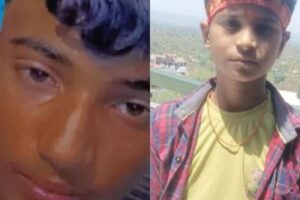‘Inhi ki kripa seh saje hum hain’ (We are resplendent because of him).’
Singhu, Tikri and Ghazipur are new names in the geographic consciousness of the country. Three places that have given a new meaning to the words haq (right). They have also showcased visuals, sounds, voices, languages, and the culture of Punjab and Uttar Pradesh to India that has so far drawn its information largely from Hindi movies. Actors playing out parts, their words, clothes, customs, beards, turbans, all made up and unlike the real ones.
Sikh farmers, easily identified by their flowing beards and colourful turbans, are a sight to behold. The most distinguishing part of a Sikh man is the turban that he wears. Called dastar in Punjabi and pagdi in Hindi, it identifies him. The Sikhs started to wear the turban after the tenth Guru, Guru Gobind Singh, created the Khalsa quom (pure community) on the day of Baisakhi in April of 1699, at the city of Anandpur in Punjab.
Dastar’s significance is tied to Kesh (hair), one of the five K’s of Sikhism, the other four being Kanga (a small wooden comb to keep uncut hair in place and signifying cleanliness and order), Kacha (cotton shorts to signify chastity and readiness for battle), Kada (a steel bracelet signifying strength and integrity), and Kirpan (a ceremonial sword to signify martial strength).
The turban provides an identity to the Sikh and is tied to keep the hair and the head covered all the time. Inside the laad (layers) of the turban, one will also find a small Kanga. The initiation, the rite to passage for a Sikh boy into Sikhism starts with his Dastar Bandi. A tying of the first turban on the bowed head of a young boy, sitting in front of the Guru Granth Sahib. Visually endearing and culturally symbolic in many ways; for accepting the maryada (dignity) of the religion and the sanctity of the Granth.
The Dastar/Pagri occupies a very important place in a Sikh household and was accorded a deferential status in ours as well. Neither its importance and nor its significance was ever mentioned or explained. It was something we observed and imbibed. From the time, the Mul (cotton material), six yards long, dyed into either cream or maroon – the only two colours my father wore – reached home, it acquired an aura all on its own.
My mother would normally get six pieces done together – three each of beige and maroon. Six, six-metre pieces of white Mul were bought from the local fabric shop Bhrawan Di Hatti and taken to the lallari (the local dyer). And there, they stewed in large vats of colour, the beige ones were done first as this was the lightest shade and was the first to be mixed. As the day progressed, the colours in the vats changed. Maroon’s turn came almost near the end of the day, after which the colour-concoction finally moved to black.
It was my duty to deliver the material to the dyer. And even though he had dyed almost all of my father’s pagdis, it was still my duty to repeat, at my mother’s instructions and with much solemnity, “Eh Daddy di pagdian ney, gadda rang lagana tey halka kalf chada dena (These are my father’s turbans, please apply deep colour that doesn’t run. And lightly starch them too.)”
Perhaps, all of the work that came to him came with similar instructions, and though he paid no attention to my words, I knew that it was important to my mother that I pass this message to him.
The six, six-meter long magically transformed material, came home wrapped in old Urdu newspapers, in bundles of three. They would be fuffed up with the starch and held together with strings of old manjha (kite thread) sometimes, and thin leers (long strips) of freshly dyed material at other times. These leers were fashioned from the cloth bits used for the initial colour testing. They signified the last check before new and expensive things entrusted with the dyer, dupattas (stoles), pagdis, unn(woollen yarn), and countless other things, were dunked into the bubbling colour vats.
It was an important step, for the dying happened only after seeing how the colour looked on the leer. The strips changed colour as the day progressed and were then set aside when they could not hold anymore colour, their stories, and journeys held in the colours they were dipped in, the change in their appearance adding to their utility. Upon their return from the dyer, my mother would reverentially hold the pagdis up to her head. I thought she did it to convey her love for my father, later I realised that it was also to show her respect for the most sacred identity marker of the Sikhs, the pagdi.
Turbans are worn all over India and each one showcases a distinct regional style. The Sikh turban, the Dastar can be worn in two ways – the starched ones, which have a stiffer form and last for a few days, and the unstarched ones, which have to be unravelled and retied before every use. Since they were the starched ones, my father’s turbans occupied a special place in our life and our home. Two shelves in his cupboard were kept for his turbans, one for the yet to be tied and the second bigger shelf for the already tied and worn, resting and waiting for their turn to be worn again. His cupboard had a full-length mirror. To first make sure that the laad (front folds) of the turban were straight and tucked in neatly, and second for him to check his overall appearance.
Next to the turbans in his cupboard were his fifties half turbans, a box of oil-pins, and his pagdi di silai(the long needle). The silai was used to give crease and to direct the laad at the front and to gently push any stray hair under the turban for a neat appearance.
Fifties, like scarfs, are rectangular cloth bands, about eight inches wide and about 40 inches long, they are worn under the turban and keep the head and hair covered once the turban is taken off. Under the turbans, they peek out in the front like little triangles and provide visual relief. They also help absorb the sweat from the hair and head in the summer and keep the mul turbans dry and clean. The name fifties was given to the headscarf, by the officers of the British Army. The Sikh troops were issued one turban and a headscarf to wear under their turban as part of their uniform. Since the length of the headscarf was exactly half of the turban, and not knowing what else to call them, the officers just called them fifties. The Sikh troops wore fifties under their full turbans.
My father’s fifties were black rectangular pieces of cloth. Hand-stitched by my mother on her Singer sewing machine, the edges neatly stitched in. All my life, I never saw my father without his fifty or his pagdi. It was always one or the other. Even on his last journey, his fifty was intact, hidden under the woollen cap on his head, for he left us in the cold winter month of January.
On a separate shelf, in an old Mangat Ram Halwai’s rectangular tin box, were things required for fixing his dadhi (beard). In order of use, some coconut oil, a comb, a big flat brush, a long thick braid made of coarse black thread, a bottle of Simco beard fixer, a beard net, and about five neatly rolled white thathas. The thathas were also stitched by my mother, four inches wide and about 15 inches in length, white poplin material cut into rectangular strips and stitched on the edges. Their job was to hold the beard in its place after it had been set and fix it. The thin poplin material allowing air to enter and set it.
Along with the fifties and the thathas stitched by her on her machine, the thick black braid was also painstakingly hand-made by my mother. She would take a spool of black thick thread and roll it around her knees about five times and then tie it tightly together on one end using a piece of the same thread. Once this was done, and it looked like a garland caught at one end, she would cut the threads on the opposite side of the knot. This cut made it look like a rather long black tassel. Holding the knotted end between the big and the long toe of her right foot, she would divide the long threads into three equal parts and then tightly braid it, working very methodically and checking for any snags. Once she reached the end of the tassel, a small string of the same black thread was used to tie it up into a tight knot, encasing the braid between two knots forever.
To a Sikh man, setting his beard and tying his turban is an act of pure love. It is no less than a spiritual ritual. It requires effort and asks for discipline. My father would brush his beard forward and holding the long braided thread evenly at its ends, place it under his chin and circle his face with it and finally tie it on his head, on top of his fifty. It would nest behind his beard, and the hair on his face would be pushed forward. This was followed by dipping his silai in the bottle of fixo and applying it in quick strokes to the hair. Brushing his hair vigorously to weave it through his open beard he would then push the hair neatly under the black thread. The gum in the fixo flattened the hair and made them pliable to push it under the thread.
After this, the beard net was used to cover the side of his face to keep it from fluffing up. The ends of the beard net soon joined the knot of the braid at the top of his fifty. (The beard net is a thin strip of elasticated net tapering into a cotton thread on each end, to stretch over the sides of the face to secure the beard.) Once this was done, the thatha would be tied over the beard and a third knot made on the head. My father took a long time to work on his moustache, it had to be separated and combed and then twirled into place.
Once the thatha was in its place, the lightly starched pagdi was unfurled. I was handed one end of the pagdi and asked to walk back till there was no slack left. The turban material opened out into a full rectangle. It was then pulled on the diagonal till the length of six metres was stretched to the maximum possible. Holding the diagonal, both of us would start working on the opposite ends, I would hold the diagonal in my left hand and he in his right and start folding the open sides inwards. After the rectangle became a neatly folded long accordion, we would give it a hard tug, using the starch to compact it. My father would then reel me in towards him folding the long turban along his arm to his elbow. Many a time, when my mother and I were not at home, he would use the door handle to fold his turban, tying one end to the door handle first, he would fold it on one side and reverse the direction of the fold by tying the folded end to the door handle.
Standing in front of the long mirror and holding one end of the diagonal accordion between his teeth, he would coax the pleated starched mul into neatness and tie the turban around his head, securing it with thin and small oil-pins as he went along. In the end, the little tail between his teeth would be looped and tucked in at the back of the turban, to secure it and prevent it from moving.
Once the beard was set, the thatha would be carefully peeled off, since some fixo would have transferred to the cloth from the beard net. And then, my father would carefully open one inside laadof the turban resting on his head and cover the top of his head. Being a keshdhari Sikh requires a lot of work, patience, and discipline. My father referred to the braided thread rope and the net as his shikanja ( a vice grip). Before leaving home, he would ask my mother, “theek wei (is it fine)?” And wait for her “theek ei (it is fine)”.
My mother would often tease my father, “You take longer to dress up than me.” My father would laugh and run an appreciative hand over his beard and adjust his pagdi. For him, his pagdi held his self-respect and his soul. It was his roop (form). We would also tease my mother, you love Daddy’s pagdismore than him, and she would say, “Eh Kalgi Padshah di nehmat wei teh enha da sartaj wei (This is a blessing from the Guru Gobind and a crown on your father’s head.)”
Much later in her life, my mother eyesight deteriorated enough to restrict her movements and workload. Among other changes, my father started wearing unstarched turbans yet, she would somehow make sure that his pagdi was always neatly tied and firmly pleated. Her “theek” was still important to him. My father returned her love in equally gentle ways, by serving her meals, and telling her where everything was on the plate, and dabbing her chin with his handkerchief for any spillovers. He would peel a banana and hand it to her, cut apples and oranges and give her a slice at a time.
This is not my father’s story alone, it runs common in all men who wear a turban. The love, respect, and dignity accorded to pagdis by the Sikhs is visible in the visuals from the protest spaces on the borders of Delhi. In the pride with which the Sikh farmers take care of their turbans. Unmindful of the extreme cold, the unseasonal rains, and the cramped tents. Standing in front of the rearview mirrors by the side of their tractors, sitting in front of small mirrors tied to poles of their trolleys, somehow they tie their colourful turbans. Not a laad out of place, not a crease in its appearance.


















